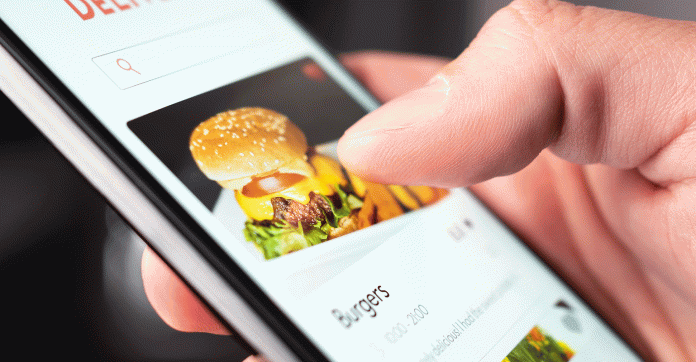How To Create A Food Ordering Mobile App : In this digital age, the meals enterprise has witnessed a massive transformation with the emergence of meals ordering cellular apps. Whether you are a restaurant proprietor or an aspiring app developer, developing a meals ordering cell app is a promising venture.
However, to ensure your app’s success, it’s crucial to address browsing and privacy considerations.
What Programming Languages Are Commonly Used To Create Food Ordering Mobile Apps?
When venturing into the creation of food ordering mobile apps, developers commonly rely on programming languages such as Java for Android, and Swift or Kotlin for iOS. These languages offer versatility and performance, catering to the diverse user base. Integrating features subway coupons enhances the app’s appeal, providing users with discounts and promotions, fostering customer loyalty, and contributing to a positive user experience. Incorporating such incentives can significantly boost engagement and encourage users to explore and utilize your app more frequently.
Can You Recommend A Reliable Framework For Building A Food Ordering App?
When it comes to frameworks, one standout preference is React Native. This open-source framework permits you to construct apps for each Android and iOS structures the use of a single codebase. React Native is famend for its effectivity and the potential to create a responsive, high-performance app.
How Do I Integrate Payment Options In My Food Ordering Mobile App?
Integrating payment options in your food ordering mobile app is a pivotal step to provide a seamless user experience. Incorporate secure payment gateways like PayPal, Stripe, or Square, ensuring compliance with PCI DSS for data security. Emphasize multiple payment methods for user convenience.
To sweeten the deal, consider implementing exclusive discounts Subway 15 off enticing users with special offers and fostering loyalty. This not only enhances the app’s attractiveness but also encourages users to choose your platform for their food orders.
What Are The Key Features I Should Include In My Food Ordering App?
- User Registration and Profiles: Allow users to create accounts, manage their profiles, and save their favorite orders.
- Menu and Ordering System: Display a user-friendly menu, provide customization options, and streamline the order placement process.
- Real-Time Order Tracking: Implement a feature that enables users to track their orders in real-time, enhancing their overall experience.
- Reviews and Ratings: Encourage user feedback and provide a platform for customers to rate their orders.
- Notifications: Send push notifications to keep users updated about their orders and promotions.
- Secure Payment Options: Offer multiple payment methods, and prioritize security to protect sensitive information.
How Can I Implement Real-Time Order Tracking For Customers In My App?
Real-time order tracking is a game-changer for food ordering apps. To achieve this, integrate a GPS-based tracking system that allows users to follow their orders from preparation to delivery. With your customers, this functionality increases transparency and builds confidence.
What Measures Can I Implement To Guarantee The Security Of User Data And Transactions Within My App?
Use strong encryption techniques for both data in transit and data at rest in your app to protect user information and transactional data. Update and patch your software regularly to address vulnerabilities. Employ authentication and authorization mechanisms for user access. Conduct thorough security testing and assessments.
Train your team in security best practices. Comply with relevant data protection regulations. Collaborate with reputable payment processors and use secure channels for financial transactions. Establish strong user data protection policies and communicate them transparently to your users.
What Steps Are Involved In Designing An Intuitive User Interface For A Food Ordering App?
Designing an intuitive user interface is paramount. Consider these steps:
- User-Centric Approach: Prioritize user experience, ensuring ease of navigation and a clean layout.
- Intuitive Menu Design: Organize the menu logically, with clear categories and images for items.
- Responsive Design: Ensure your app functions well on various devices and screen sizes.
What Are The Best Practices For Optimizing The App’s Performance And Speed?
Optimizing an app’s performance and speed requires a holistic approach. Start by efficient coding and minimize unnecessary background processes. Prioritize image and data compression for quicker loading. Implement effective caching and leverage Content Delivery Networks (CDNs). Opt for asynchronous operations, reducing blocking actions.
Regularly test and analyze for bottlenecks or memory leaks. Keep app updates and maintenance consistent to stay compatible with the latest devices and technologies. User feedback and continuous monitoring play a vital role in identifying and addressing performance issues, ensuring a smooth user experience.
Also Read this article : Software Developer vs Software Engineer
Browsing And Privacy Considerations
In state-of-the-art digital age, ordering quick meals on line has end up exceptionally convenient. With a few clicks or taps, you can have your favourite dishes delivered to your doorstep. However, as you indulge in the world of on-line meals delivery, it is quintessential to preserve looking and privateness concerns in mind.
This article will shed light on how you can enjoy the ease of ordering fast food online while safeguarding your privacy and personal information.
What Is The Best Programming Language For A Food Ordering Mobile App?
The choice of programming language depends on your target platform. Java is commonly used for Android apps, while Swift and Kotlin are popular for iOS apps.
Are There Any Recommended Frameworks For Building A Food Ordering App?
React Native is a reliable framework that allows you to build cross-platform apps efficiently using a single codebase.
Conclusion
Creating a food ordering mobile app involves several key steps, including market research, design, development, and testing. By understanding user preferences, offering intuitive navigation, and integrating secure payment options, you can deliver a seamless and satisfying experience.
Regular updates and responsive customer support are vital for maintaining user satisfaction. In conclusion, developing a successful food ordering app requires a balance of innovation and user-centric design, ultimately delivering a convenient solution that meets the demands of today’s fast-paced world.


